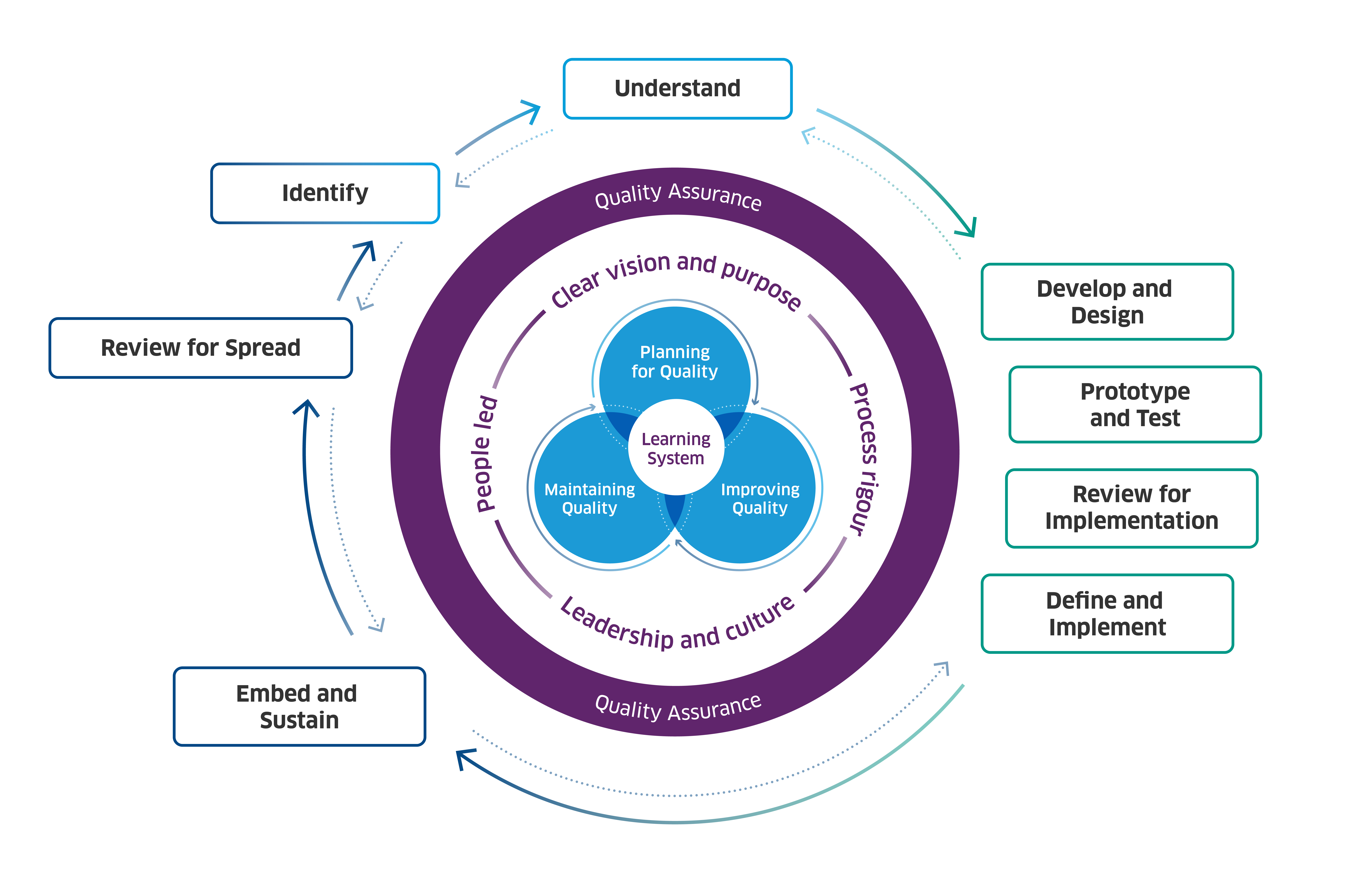Near Me is a video consulting service used across NHS Scotland, local authorities and the wider public sector in Scotland. The project aimed to develop and embed video consulting within outpatient services improve access for patients. It had to be easy to use and provide benefits for patients and staff. The full case study and summary are available below.

Steps of change
Identify
Identified the problem: Highland is a remote and rural area of Scotland. Outpatient clinics were delivered in the urban centre resulting in travel times for patients of up to 3 hours each way. Video consulting technology was rarely used due to lack of standardised processes.
Understand
Understood the views of people through extensive engagement with people who use, deliver and enable services. Used system mapping to understand the current system and processes.
Develop and design
Used a co-design approach involving discussion and demonstration of the service with people who use, provide and enable services.
Prototype and test
Prototyped and tested the new service by creating an initial service model with an agreed standard process, undertaking real time testing with people who use, deliver and enable services, and undertaking continuous improvement using PDSA (Plan, Do, Study, Act) cycles.
Review for implementation
Reviewed for implementation through evaluating the feasibility, acceptability and advantages/disadvantage of the service, recording and acting on the results from each PDSA cycle, and capturing and reviewing qualitative and quantitative data.
Define and implement
Defined and implemented a standard process manual for the Near Me service so that it could be used by all clinical services across NHS Highland in a standardised way.
Embed and sustain
Embedded and sustained the service through raising awareness of the service with staff and the public, delivering training for staff, providing demonstrations of the service for the public, creating clinical rooms for Near Me consultations, and monitoring data on an ongoing basis.
Review for spread
Undertook a second change cycle to spread Near Me to patients in their own homes based on learning from the first cycle, and ongoing involvement of people.
Enablers of quality and change
Clear vision and purpose
A clear vision helped to provide direction, motivation, and alignment, including:
- purpose provided by patient demand for better access to outpatient services
- understanding the challenge associated with travelling to outpatient clinics
- developing a shared understanding that the service had to be easy to use and provide benefits for patients and staff
Leadership and culture
Leadership and culture were critical in driving the change forward, including:
- senior leadership provided by the Chief Executive including raising awareness, making connections, unblocking barriers, and permissioning experimentation
- a project lead experienced in delivering change and change methods
- creating a culture of genuine collaboration through extensive engagement
- listening and responding to people’s concerns
People-led
Ensuring a people led approach to change was essential, including:
- shaping the service through engagement and co-design with people who use, deliver and enable service
- listening to, acting on, and amplifying the voices of people
Process rigour
Ensuring process rigour was key to ensuring high-quality and reliable outcomes, including:
- using programme management to ensure a clear aim and timely progress
- applying methods such as quality improvement, engagement and service design
- collating, reporting on, and acting on quantitative and qualitative data
- establishing a governance group to provide oversight of the project
- developing a Near Me process manual with a standardised process that covered every element of outpatient clinics
